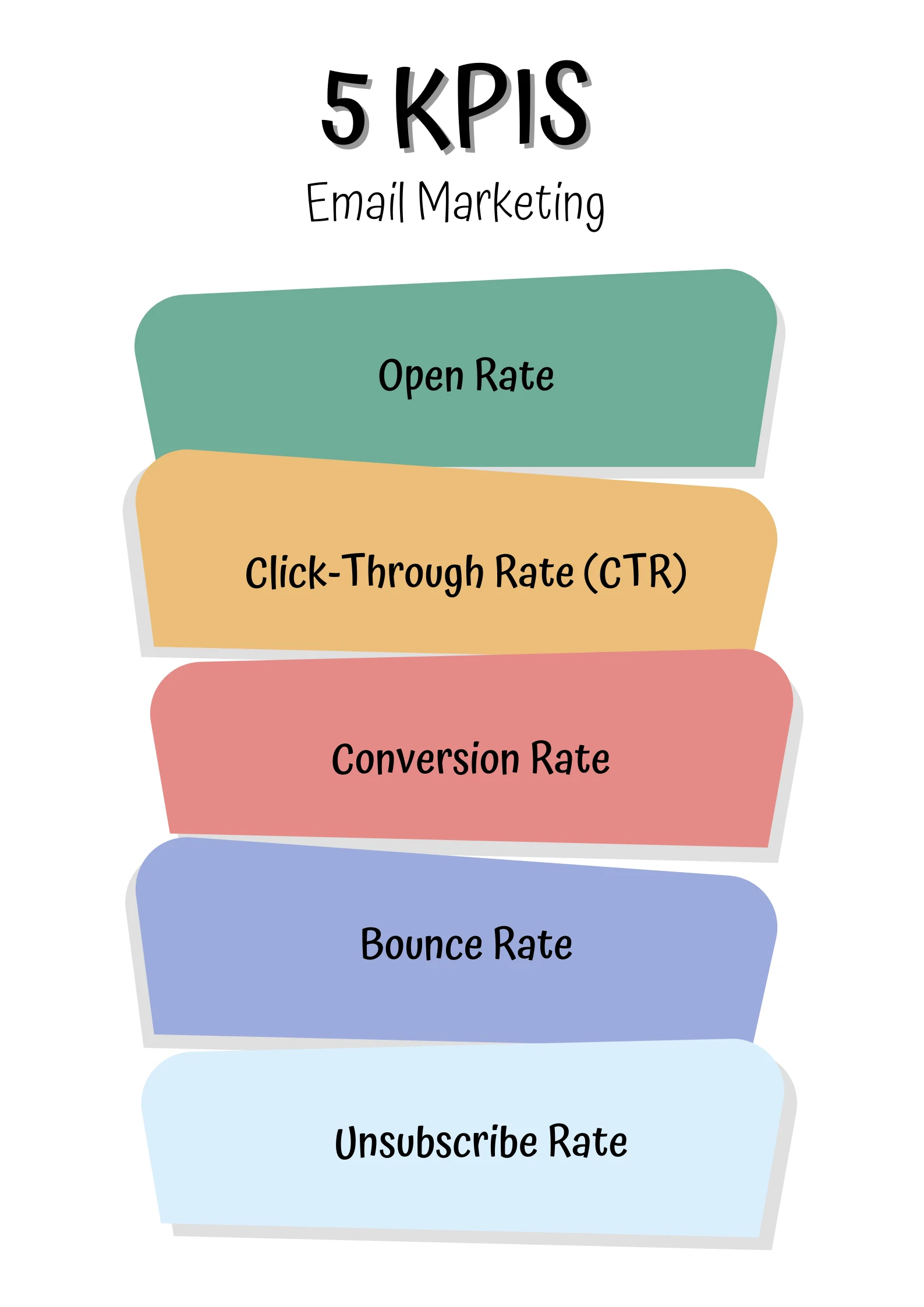Email Marketing KPIs: Top 5

Tracking email performance through the right KPIs gives you a clear view of how your audience engages with your content. Without proper monitoring and analysis, it’s easy to waste time, budget, and potential by sending campaigns that don’t deliver real results.
In this article, you’ll discover the 5 most important email marketing KPIs you should be tracking, along with actionable tips to optimize each one and improve the overall success of your email marketing strategy.

What Are the Most Important Email Marketing KPIs?
1. Open Rate
Your email open rate shows the percentage of recipients who opened your email compared to how many received it. It's one of the most basic yet critical email marketing KPIs — a low open rate usually signals that your subject line isn’t compelling enough, or your audience isn’t interested at first glance.
How to improve your open rate:
Write attention-grabbing subject lines using numbers, questions, or a touch of humor
Test different send times, like Tuesday mornings or Thursday afternoons
Use personalization, such as the recipient’s name or dynamic content based on their behavior
Optimize subject lines for mobile, since most users check emails on their smartphones
A healthy open rate typically ranges from 20% to 25%, though this can vary depending on your industry and audience.
2. Click-Through Rate (CTR)
The click-through rate (CTR) measures the percentage of recipients who clicked on one or more links within your email. This is one of the most critical email marketing KPIs, as it indicates how effectively your content motivates subscribers to take action.
How to increase your CTR:
Use clear, action-driven CTAs like “View Product,” “Learn More,” or “Sign Up Now”
Place your CTA buttons in prominent locations within the email layout
Prefer buttons over plain text links, especially for better visibility on mobile devices
Enhance links with visuals — use icons or relevant images to draw attention
Keep your emails focused, with one main goal and a limited number of links to avoid distractions
Run A/B tests not just on subject lines, but also on different CTA styles and placements to learn what resonates best with your audience and drives the highest engagement.
3. Conversion Rate
Your conversion rate reflects the percentage of recipients who clicked through your email and completed a desired action — whether that’s making a purchase, signing up for a service, or downloading a resource. This is arguably the most important email marketing KPI, as it directly measures your campaign’s return on investment (ROI).
How to increase your email conversion rate:
Ensure your landing page is relevant to your email content and loads quickly on all devices
Offer a clear incentive, such as a discount, free gift, or exclusive access
Run A/B tests on subject lines, offers, and CTAs to identify what drives better results
Remove friction from the conversion process, like long forms or unnecessary steps on your landing page
If your click-through rate is high but your conversion rate is low, the issue is likely with your landing page, not the email itself.
4. Bounce Rate
Your email bounce rate measures the percentage of emails that failed to reach your recipients. These are divided into soft bounces (temporary issues like a full inbox or server error) and hard bounces (permanent issues like invalid or non-existent email addresses).
A high bounce rate can seriously damage your sender reputation, affect your email deliverability, and may even get your domain blacklisted, meaning your future emails could go straight to spam folders.
How to reduce your bounce rate:
Clean your email list regularly, removing invalid or inactive addresses
Use double opt-in so subscribers confirm their email before being added to your list
Validate emails before sending with tools like ZeroBounce
Avoid buying email lists, as they often contain low-quality or fake addresses
Choose a reliable email service provider (ESP) with strong delivery infrastructure
A healthy bounce rate is typically below 2%. If yours is higher, it’s time to audit your list and improve your email hygiene practices.
5. Unsubscribe Rate
The Unsubscribe Rate shows how many recipients chose to unsubscribe from your list after sending an email. While a low rate is normal, a sharp increase can mean that something is not working, either in the content, the frequency of sending, or the user's expectation.
How to reduce your bounce rate:
Send targeted content, based on the user's interests and past actions
Set the frequency of emails correctly, neither too often, nor so infrequently that the audience forgets you
Offer options instead of immediate unsubscribe, such as "fewer emails", "offers only", "monthly newsletter"
Evaluate emails that lead to increased unsubscribes to identify patterns
Don't avoid the unsubscribe button, it's better to have someone leave than to have someone ignore or mark your emails as spam.
Email marketing KPIs aren’t just numbers, they’re signals. They show you whether your strategy is working or if it’s time to make a shift. By consistently tracking key metrics like open rate, click-through rate, and conversions, you gain valuable insights into what’s working and what needs improvement.
And remember: small tweaks a stronger subject line, a clearer CTA, or smarter segmentation can make a big difference in your campaign performance.
Need help with your email marketing strategy, content creation, or automation?
👉 Get in touch with us or explore our email marketing services to take your campaigns to the next level.


